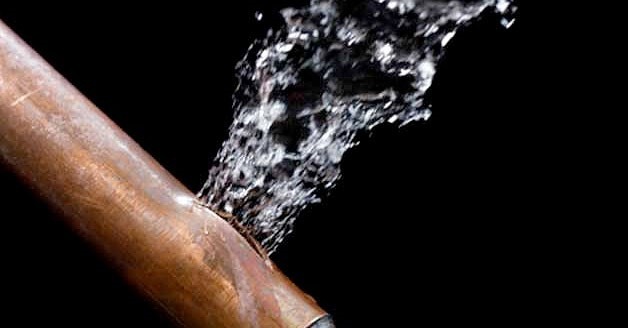Guide To Water Leakage Discovery In Your Home
Guide To Water Leakage Discovery In Your Home
Blog Article
They are making several great points relating to Locating water leaks as a whole in this article further down.

Early detection of dripping water lines can alleviate a potential calamity. In addition to conserving you cash, it will minimize the irritation as well as disappointment. The minute you locate a leak, calling your plumber for repair services is the best option. Nonetheless, some little water leaks may not show up. If you can not detect it with your nude eyes, right here are some hacks that assist.
1. Take A Look At the Water Meter
Every home has a water meter. Inspecting it is a surefire manner in which aids you find leaks. For beginners, shut off all the water sources. Make certain no person will flush, make use of the tap, shower, run the washing maker or dishwashing machine. From there, most likely to the meter as well as watch if it will change. Since no person is using it, there should be no activities. If it moves, that shows a fast-moving leakage. If you spot no modifications, wait an hour or two and examine back once more. This suggests you might have a slow-moving leakage that might even be below ground.
2. Check Water Consumption
Assess your water bills and track your water usage. As the one paying it, you ought to see if there are any type of inconsistencies. If you detect sudden changes, in spite of your intake being the same, it means that you have leaks in your plumbing system. Bear in mind, your water expense need to drop under the exact same range monthly. An unexpected spike in your costs suggests a fast-moving leak.
A consistent rise every month, even with the very same habits, reveals you have a slow leakage that's also gradually intensifying. Call a plumber to thoroughly inspect your property, especially if you feel a cozy area on your flooring with piping beneath.
3. Do a Food Coloring Examination
30% comes from commodes when it comes to water consumption. Test to see if they are running correctly. Decrease specks of food color in the storage tank and wait 10 minutes. There's a leak between the container as well as bowl if the shade in some way infiltrates your bowl throughout that time without flushing.
4. Asses Outside Lines
Don't neglect to check your exterior water lines as well. Examination spigots by affixing a yard hose. Ought to water permeate out of the link, you have a loosened rubber gasket. Change this and make certain all links are limited. It will help get it professionally took a look at and also kept annually if you've got a sprinkler system. One little leak can waste tons of water and spike your water bill.
5. Examine and Analyze the Scenario
Homeowners need to make it a routine to check under the sink counters and also even inside cupboards for any bad odor or mold and mildew growth. These 2 warnings suggest a leakage so prompt focus is required. Doing routine assessments, even bi-annually, can save you from a significant trouble.
If you understand your home is currently old, keep a watchful eye on your heaters, hose pipes, pipes and so on. Check for stainings and also compromising as the majority of pipes and also appliances have a life span. They will certainly also normally deteriorate because of wear and tear. If you suspect leaking water lines in your plumbing system, do not await it to escalate. Call a specialist plumber immediately so you don't end up with a horrible mess in your home.
Early detection of leaking water lines can reduce a possible catastrophe. Some little water leakages may not be visible. Checking it is a guaranteed method that aids you find leaks. One little leakage can waste heaps of water and also spike your water bill.
If you suspect leaking water lines in your plumbing system, don't wait for it to escalate.
WARNING SIGNS OF WATER LEAKAGE BEHIND THE WALL
PERSISTENT MUSTY ODORS
As water slowly drips from a leaky pipe inside the wall, flooring and sheetrock stay damp and develop an odor similar to wet cardboard. It generates a musty smell that can help you find hidden leaks.
MOLD IN UNUSUAL AREAS
Mold usually grows in wet areas like kitchens, baths and laundry rooms. If you spot the stuff on walls or baseboards in other rooms of the house, it’s a good indicator of undetected water leaks.
STAINS THAT GROW
When mold thrives around a leaky pipe, it sometimes takes hold on the inside surface of the affected wall. A growing stain on otherwise clean sheetrock is often your sign of a hidden plumbing problem.
PEELING OR BUBBLING WALLPAPER / PAINT
This clue is easy to miss in rooms that don’t get much use. When you see wallpaper separating along seams or paint bubbling or flaking off the wall, blame sheetrock that stays wet because of an undetected leak.
BUCKLED CEILINGS AND STAINED FLOORS
If ceilings or floors in bathrooms, kitchens or laundry areas develop structural problems, don’t rule out constant damp inside the walls. Wet sheetrock can affect adjacent framing, flooring and ceilings.
https://www.servicemasterbyzaba.com/blog/how-to-detect-water-leakage-in-walls/

I'm very fascinated by Top leak detection hacks and I am assuming you appreciated our blog post. Sharing is good. Helping others is fun. Thanks a bunch for your time. Visit us again soon.
Report this page